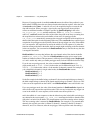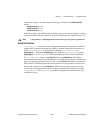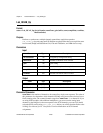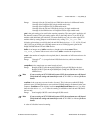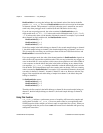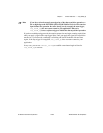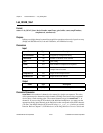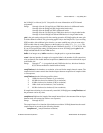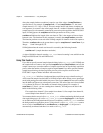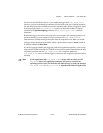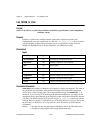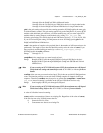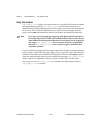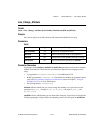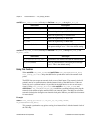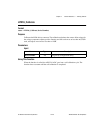
Chapter 2 Function Reference — Lab_ISCAN_Start
NI-DAQ FRM for PC Compatibles 2-272
©
National Instruments Corporation
where the sample timebase resolution is equal to one of the values of sampTimebase as
specified above. For example, if sampInterval = 25 and sampTimebase = 2, the actual
sample interval is 25
*
10 µs = 250 µs. The total sample interval (the time to complete one
scan sequence) in seconds is the actual sample interval
*
number of channels scanned. If the
sample interval is to be externally controlled by conversion pulses applied to the EXTCONV*
input, NI-DAQ ignores the sampInterval and the parameter can be any value.
scanInterval indicates the length of the scan interval. This is the amount of time to elapse
between scans. The timebase for this parameter is actually the sampTimebase parameter.
The function performs a scan each time NI-DAQ samples all channels in the scan sequence.
Therefore, scanInterval must be greater than or equal to sampInterval * numChans +5 µs.
Range: 0 and 2 through 65,535.
NI-DAQ determines the actual scan interval in seconds by the following formula:
scanInterval * (sample timebase resolution)
A value of 0 disables interval scanning.
Lab_ISCAN interval scanning is not available on the
DAQCard-500/700 and 516 and LPM devices.
Using This Function
If you did not specify external sample-interval timing by the DAQ_Config call, NI-DAQ sets
the sample-interval counter to the specified sampInterval and sampTimebase, and sets the
sample counter up to count the number of samples acquired and to stop the data acquisition
process when the number of samples acquired equals count. If you have specified external
sample-interval timing, the data acquisition circuitry relies on pulses received on the
EXTCONV* input to initiate individual A/D conversions.
Lab_ISCAN_Start initializes a background data acquisition process to handle storing of
A/D conversion samples into the buffer as NI-DAQ acquires them. When you use posttrigger
mode (with pretrigger mode disabled), the process stores up to count A/D conversion samples
into the buffer and ignores any subsequent conversions. The order of the scan is from channel
n–1 to channel 0, where n is the number of channels being scanned. For example, if
numChans is 3 (that is, you are scanning three channels), NI-DAQ stores the data in the
buffer in the following order:
First sample from channel 2, first sample from channel 1, first sample from channel 0,
second sample from channel 2, and so on.
You cannot make the second call to
Lab_ISCAN_Start without terminating this background
data acquisition process. If a call to
Lab_ISCAN_Check returns daqStopped = 1, the samples
are available and NI-DAQ terminates the process. In addition, a call to
DAQ_Clear terminates
the background data acquisition process. Notice that if a call to
Lab_ISCAN_Check returns
an error code of overFlowError or overRunError, or daqStopped = 1, the process is
automatically terminated and there is no need to call
DAQ_Clear.



